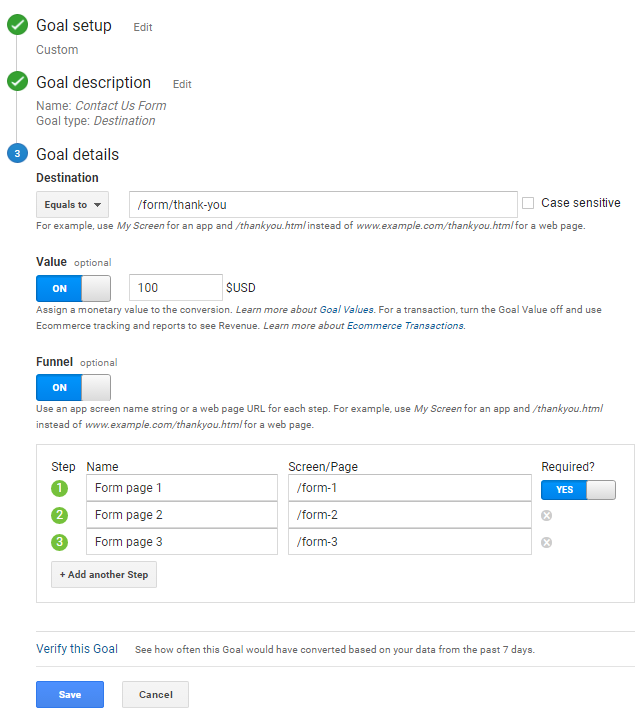What Data Is Google Analytics Goals Unable to Track: A Total Guide
What Data Is Google Analytics Goals Unable to Track: A Total Guide
Blog Article
Discover the Limitations of Google Analytics Goals: Unveiling the Data Types That Remain Untrackable
As organizations progressively rely on data-driven decision-making, recognizing the restrictions of tools like Google Analytics comes to be paramount. While Google Analytics Goals offer important understandings right into user communications, there exist information kinds that elude monitoring, positioning obstacles to a comprehensive understanding of user habits.
Insufficient Individual Journey Tracking
Insufficient individual trip monitoring within Google Analytics can impede the capacity to properly evaluate user habits. When the individual journey is not totally tracked, there are spaces in the data that stop a thorough understanding of just how users connect with a website. This absence of understanding can bring about missed opportunities for optimization and improvements to the user experience.
One common issue with insufficient user trip tracking is the inability to see the complete course that users take before completing an objective or leaving the website. Without this info, it is testing to identify where customers may be encountering challenges or rubbing points that prevent them from transforming. In addition, insufficient monitoring can obscure the influence of certain marketing initiatives or website modifications on individual behavior.
To resolve this limitation, it is essential to establish appropriate monitoring systems within Google Analytics to catch the whole customer journey. This might entail establishing up event tracking, objective funnels, or making use of tools like Google Tag Manager to guarantee that no important interactions go unrecorded. By gaining a comprehensive view of the customer journey, website owners can make more informed decisions to improve customer engagement and drive conversions.
Attribution Obstacles
Navigating with acknowledgment challenges in Google Analytics calls for an extensive understanding of how various touchpoints contribute to the total conversion process. Acknowledgment obstacles occur from the complexity of contemporary consumer trips, where users communicate with several channels before transforming.
One common attribution difficulty is the problem in attributing conversions to the appropriate source, especially in cases where users communicate with several channels before converting. Furthermore, cross-device tracking postures an additional acknowledgment challenge, as customers typically switch over between tools throughout their trip, making it challenging to track their communications effortlessly.
Offline Conversions
Provided the difficulties connected with attributing conversions accurately in online channels, the measurement of offline conversions provides a considerable possibility for marketing professionals seeking a much more comprehensive understanding of their customers' trip. Offline conversions refer to activities that customers take in the physical world, such as making purchases in brick-and-mortar shops or over the phone, going to events, or involving with published materials - what data is google analytics goals unable to track. These conversions are vital for businesses that operate both online and offline, as they give valuable understandings into the efficiency of advertising projects throughout different touchpoints
Tracking offline conversions typically postured a considerable obstacle for marketing experts, as it was testing to attach these actions back to certain on-line interactions properly. Nevertheless, with advancements in technology, such as the assimilation of CRM systems, unique identifiers, and coupon codes, businesses can now bridge the void in between online and offline information to obtain a much more alternative view of customer habits. By successfully measuring offline conversions, marketing professionals can maximize their strategies, allocate resources much more efficiently, and inevitably improve the overall consumer experience.
Cross-Device Monitoring
Cross-device monitoring plays a vital duty in recognizing the interconnected nature of customers' electronic interactions across numerous gadgets. In today's omnichannel world, where individuals flawlessly switch between smartphones, desktop computers, and tablet computers, tracking their behavior across these tools is important for online marketers to get a thorough sight of their client journey.

Moreover, privacy issues and policies such as GDPR and CCPA have additionally difficult cross-device monitoring. With individuals demanding even more control over their data and raised constraints on tracking technologies, online marketers must find cutting-edge and privacy-compliant go to website methods to connect user interactions throughout gadgets.
Dynamic Web Content Engagement
Understanding customer involvement with dynamic content is critical in optimizing electronic advertising and marketing methods for boosted target market interaction. Dynamic content refers to internet site components that change based upon individual habits, preferences, or other factors, supplying a personalized experience. Nevertheless, tracking user communications with vibrant material poses difficulties for typical analytics devices like Google Analytics.
While Google Analytics can track standard communications like clicks and page views, it may struggle to capture more nuanced involvements within vibrant content. what data is google analytics goals unable to track. Metrics such as time spent on particular dynamic elements, float actions, or communications within pop-ups are usually not quickly measurable making use of common tracking methods. This constraint impedes marketers' capacity to totally comprehend how users are involving with dynamic material and tailor their techniques accordingly

Conclusion
Finally, Google Analytics objectives have limitations in tracking insufficient customer trips, connecting conversions properly, capturing offline conversions, tracking cross-device interactions, and measuring vibrant material engagement. These restrictions highlight the value of exploring added tracking approaches and tools to obtain a more detailed understanding of individual behavior and conversions beyond navigate here what Google Analytics can supply.
While Google Analytics Goals offer useful understandings into individual interactions, there exist information kinds that thwart tracking, positioning challenges to a comprehensive understanding of user behavior.Insufficient individual trip tracking within Google Analytics can hinder the capability to accurately evaluate individual behavior. When the customer trip is not completely tracked, there are spaces in the information that avoid an extensive understanding of how individuals connect with a site.One usual issue with incomplete customer journey tracking is the failure to see the full course that individuals take before completing an objective or leaving the website. By obtaining a detailed view of the individual trip, web site proprietors can make even more enlightened choices to boost user interaction and go to my blog drive conversions.
Report this page